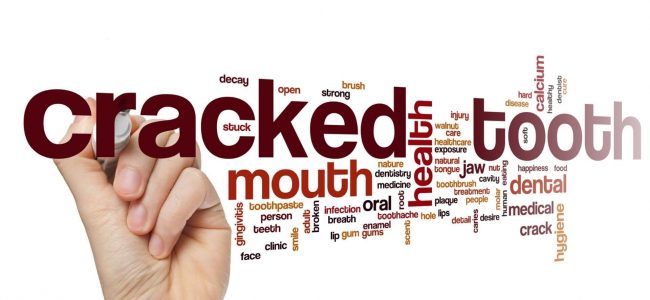What Are the Symptoms of a Cracked Tooth?
You hear a “cracked tooth,” and you envision the San Andreas fault line running from top to bottom of someone’s pearly white. Alright, maybe it’s not that dramatic but images of jagged cracks do come to mind.
But, did you know that most people often have cracked teeth without even knowing it? According to the American Dental Association, “A crack may appear as a hairline fracture, running vertically along the tooth. It often is invisible to the eye and may not show even on an X-ray.” Fractures also range in severity – some are so tiny and do not cause problems, while other types of fractures may require more serious treatment.
In the dental community, the term “cracked tooth syndrome” was coined in 1964 to classify these types of fractures that are considered incomplete, meaning the tooth has cracked but no part of the tooth has broken off. In an article published by the US National Library of Medicine,
Cracked tooth syndrome is a common and well-documented entity in clinical practice. Patients usually present with a wide variety of signs and symptoms, thus making the diagnosis difficult and complicated. A detailed history and thorough clinical examination may help in establishing a correct diagnosis and hence that an appropriate treatment plan can be instituted.
Since diagnosing a cracked tooth is notoriously difficult, dentists run a variety of tests and take many factors into consideration. But, before we talk about how a dentist diagnoses a cracked tooth, let’s first learn about what causes a cracked tooth and what it feels like.
What Causes a Cracked Tooth?
A cracked tooth can have a number of causes – from biting down too hard on something to grinding your teeth at night. The ADA says that a tooth may crack due to a variety of factors which includes:
- Chewing on hard foods (ice or hard candies)
- Trauma to the mouth
- Teeth grinding
- Loss of tooth structure
- Large fillings or other restorations
- Age (weaker teeth)
- Extreme temperature changes
Signs of a Cracked Tooth
Again, it’s often difficult to diagnose a cracked tooth because the symptoms can mimic other health issues, plus fractures are difficult to see without an X-Ray. But, if you have any of these symptoms, a cracked tooth may be causing the discomfort, and it’s advised to contact your dentist immediately:
- Sharp pain when biting on a certain tooth
- Pain when grinding teeth backward or forwards
- Sharp pain when eating or drinking cold foods
- Pain when eating or drinking something sugary
- Lack of constant pain (no chronic pain)
- Infection
Diagnosing and Treatment of a Cracked Tooth
To diagnose a cracked tooth a dentist usually performs the following
Like most health issues, treatment depends on the severity and location of the crack. According to the ADA, “Depending on the size and location of the crack, treatment may vary from bonding to root canal treatment. A severely cracked tooth may need extraction. Your dentist will determine the best treatment for you.”
The ADA says that tiny cracks are common and usually do not cause problems. Yet another reason to visit your dentist regularly for checkups and catch small issues early.
